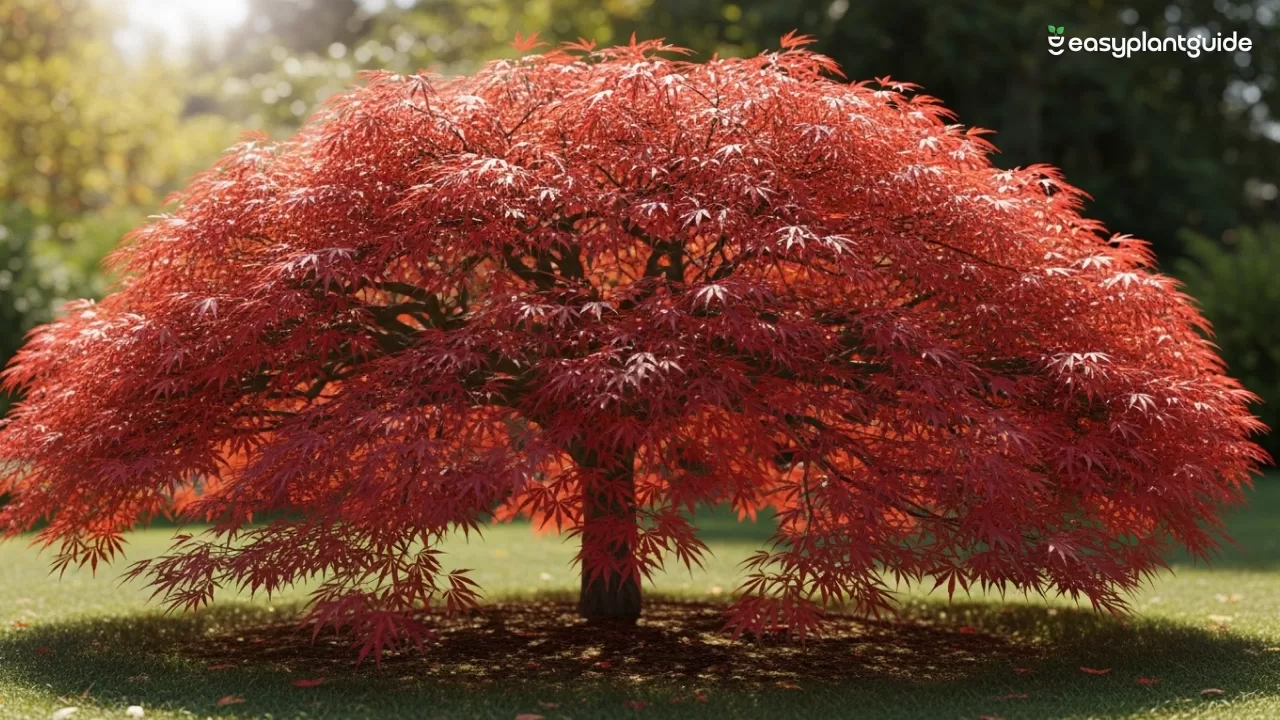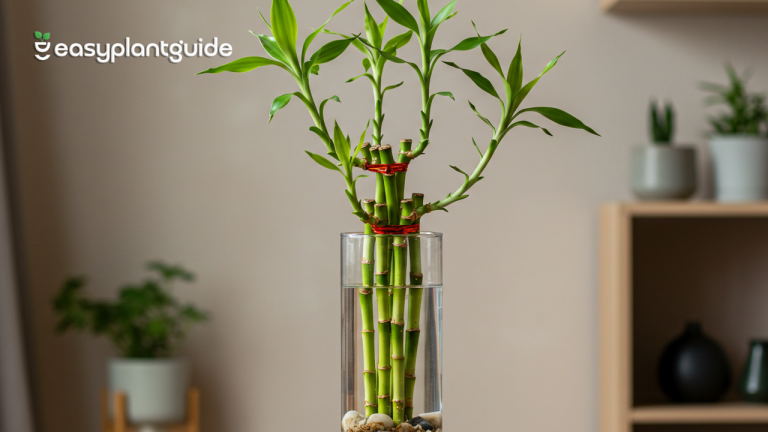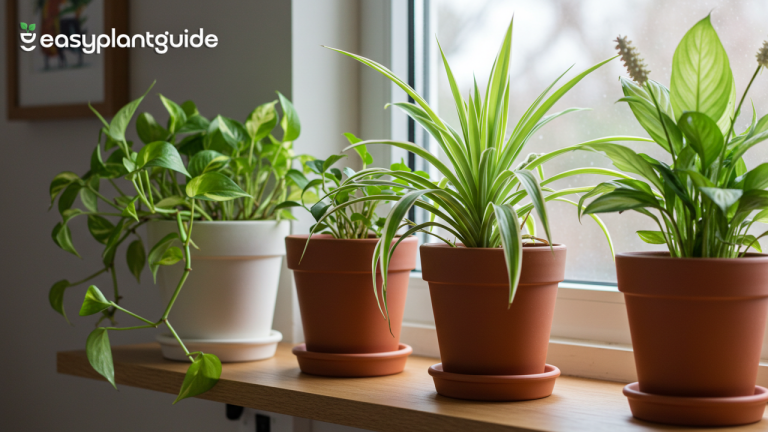Acer Osakazuki Japanese Maple: 7 Reasons Gardeners Love It
If you’ve ever dreamed of having a tree that transforms your garden into a living painting every autumn, the Acer Osakazuki Japanese Maple might just be the showstopper you’re looking for. With its fiery scarlet foliage, elegant form, and easy-going nature, this tree isn’t just a plant — it’s pure garden art. Let’s dive deep into what makes this maple a beloved favorite among gardeners worldwide.
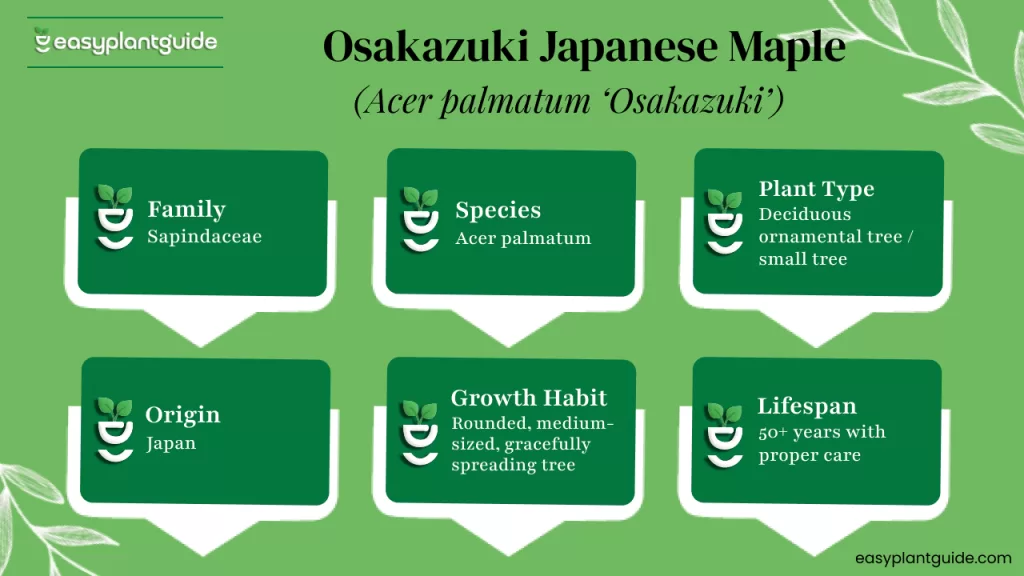
What Is Acer Osakazuki Japanese Maple?
The Acer Osakazuki, also known as Acer palmatum ‘Osakazuki’, is a deciduous tree native to Japan and Korea. It’s part of the Japanese maple family and is best known for its brilliant autumn display — turning from deep green in summer to a vivid, almost glowing, crimson-red in fall. It’s a medium-sized tree, growing up to about 15–20 feet tall with a similar spread. Whether you have a small garden, a large landscape, or even a container space, this maple fits beautifully into any setup.
Why Gardeners Adore This Tree
So, why do gardeners around the world swear by the Acer Osakazuki? Here are some of the most captivating reasons:
- Breathtaking fall color that dominates your landscape
- Graceful shape that adds structure and elegance
- Tolerates partial shade or full sun
- Low maintenance once established
- Perfect for Japanese-inspired gardens
1. The Mesmerizing Autumn Transformation
Every fall, the Acer Osakazuki Japanese Maple performs a breathtaking transformation that turns any garden into a living masterpiece. Its lush green summer foliage gradually changes into a brilliant scarlet-red display, glowing as if lit from within. The intensity of the color often outshines every other tree in the landscape, creating a view that feels almost cinematic. If you’ve ever wanted to capture the magic of autumn in your own backyard, this maple delivers that vivid beauty year after year with unmatched consistency.
2. Growth Habit and Size
The Acer Osakazuki Japanese Maple has a naturally rounded, spreading growth habit that gives it an elegant and well-balanced shape. When mature, it reaches around 20 feet in height and spreads nearly the same in width, making it an ideal medium-sized ornamental tree. Its moderate growth rate—typically about a foot per year—means it develops steadily without overwhelming the space around it. This proportionate size makes it equally suitable for compact gardens, courtyards, or as a stunning focal point in larger landscapes where it can truly shine.
3. Ideal Planting Conditions
To help your Acer Osakazuki Japanese Maple thrive, it’s important to create the right growing environment. This tree loves a spot with partial shade, especially in warmer climates, though it can handle more sunlight in cooler areas. The soil should be moist, well-drained, and slightly acidic to encourage strong root growth and vibrant leaf color. Protect it from harsh winds, as they can cause leaf scorch, and avoid waterlogged areas that lead to root rot. When spacing multiple trees, give them 10 to 15 feet of room to spread naturally and maintain their graceful shape.
4. How to Plant Acer Osakazuki Japanese Maple
Planting the Acer Osakazuki Japanese Maple correctly sets the stage for a lifetime of beauty. Start by choosing a location with dappled sunlight or gentle morning sun. Dig a hole about twice as wide as the root ball to give the roots space to expand easily. Loosen the soil and mix in compost to enrich it with nutrients before placing the tree at the same depth it was growing in its container. Fill the hole gently, press the soil down lightly, and water thoroughly to settle everything in place. Finally, apply a layer of mulch around the base to help retain moisture and keep the roots cool — like tucking your new maple into a comfortable, nurturing bed of soil.
5. Caring for Your Acer Osakazuki
Once established, the Acer Osakazuki Japanese Maple requires minimal maintenance, making it an excellent choice for both beginner and experienced gardeners. Regular watering during dry periods, especially in its first year, helps it develop a strong root system. Applying mulch every year maintains soil moisture and prevents weeds from competing for nutrients. Avoid using harsh or fast-acting fertilizers; instead, choose a slow-release organic option that feeds the tree gradually. Keep an eye out for pests like aphids or scale insects, and trim lightly as needed to maintain its graceful structure. With just a little care, this maple will reward you with decades of beauty.
6. Pruning Tips for Healthy Growth
Pruning your Acer Osakazuki Japanese Maple is simple and best done with a gentle touch. The ideal time to prune is late winter or early spring before new growth appears. Start by removing any dead, damaged, or crossing branches to improve air circulation and the tree’s overall shape. Avoid cutting into old wood, as fresh shoots typically emerge from younger growth. It’s also important not to prune during late summer, as this can lead to dieback and stress. As you work, step back occasionally to view the tree’s overall form — the goal is to enhance its natural, flowing shape rather than force symmetry.
7. Seasonal Changes You’ll Love
The Acer Osakazuki Japanese Maple offers something captivating in every season, making it a true four-season highlight in any garden. In spring, it greets you with soft, bright green leaves that look fresh and delicate. By summer, the canopy deepens into a rich, lush green, providing a calm and cooling backdrop in your landscape. Come autumn, the transformation begins — the leaves shift into fiery shades of scarlet and crimson, creating a breathtaking display that defines the season. Even in winter, when the leaves have fallen, the tree’s elegant branching structure adds architectural interest and subtle charm. No matter the time of year, it remains a standout feature in your outdoor space.
Common Problems and How to Fix Them
Even the hardiest trees can occasionally face a few challenges, and the Acer Osakazuki Japanese Maple is no exception. One of the most common issues is leaf scorch, which often occurs when the tree is exposed to intense sunlight or strong, dry winds. To prevent this, keep the soil consistently moist, apply a layer of mulch to retain water, and provide partial shade during the hottest parts of the day. Another concern is Verticillium wilt, a soil-borne disease that affects many types of maples. To avoid it, never plant your Acer Osakazuki Japanese Maple in soil where other infected maples once grew.
You may also encounter aphids, small pests that feed on tender new growth. These can be easily managed by spraying the leaves with a gentle stream of water or applying natural neem oil. Root rot can occur if the soil is poorly drained or remains waterlogged for long periods, so always ensure proper drainage and avoid overwatering. During the winter months, young trees can sometimes suffer from frost damage, especially in areas with harsh temperatures. Protecting them with a breathable garden cover or moving potted specimens to a sheltered area helps them stay healthy through the cold season.
Perfect Companions in the Garden
Want to make your Japanese maple stand out even more? Pair it with:
- Azaleas or rhododendrons
- Hostas for lush ground cover
- Ferns and ornamental grasses
- Cherry blossoms or dogwoods
- Mossy stones for a Zen vibe
Landscaping Ideas with Acer Osakazuki
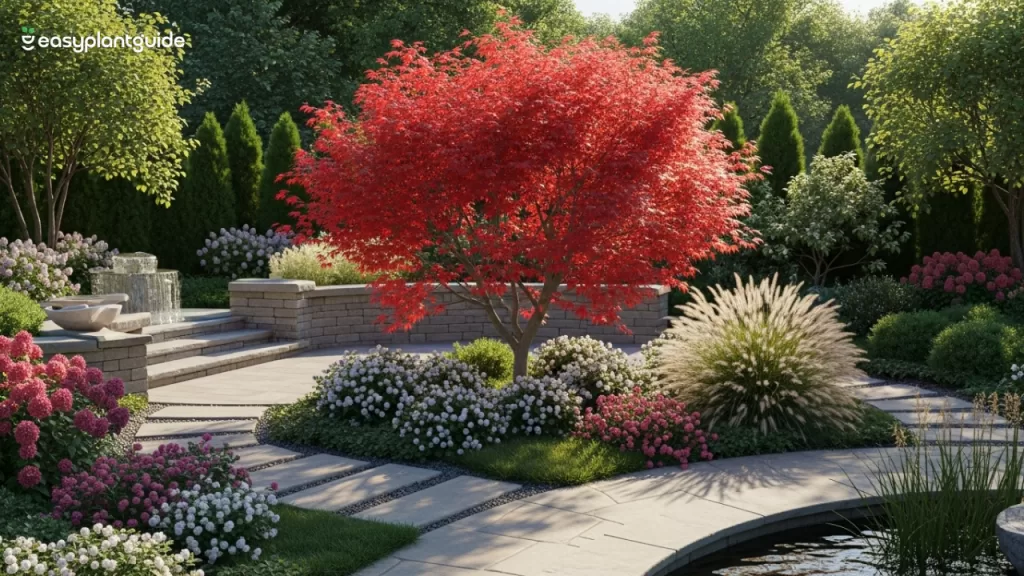
This maple isn’t just beautiful — it’s versatile! Here are 5 creative landscaping uses:
- As a focal point in your garden
- Lining pathways for a magical autumn alley
- Beside water features for reflection drama
- In a Japanese-style rock garden
- In large pots for patios or balconies
Growing Acer Osakazuki in Containers
Don’t have a garden? No worries — the Acer Osakazuki Japanese Maple thrives beautifully in large containers, making it perfect for patios, balconies, or small urban spaces. To grow it successfully in a pot, choose a loamy, well-draining soil mix that allows the roots to breathe while holding enough moisture. The soil should remain consistently damp but never waterlogged, as soggy roots can lead to rot. Every three to four years, repot your maple to refresh the soil and give its roots more room to expand.
During winter, protect the container from freezing temperatures by wrapping or moving it to a sheltered area. In spring, feed it lightly with an organic fertilizer to encourage healthy new growth and vibrant foliage. Growing the Acer Osakazuki Japanese Maple in a container lets you enjoy its stunning color transitions and graceful form even in the coziest of spaces, bringing a touch of Japanese garden serenity right to your doorstep.
Comparing Acer Osakazuki to Other Varieties
| Variety | Fall Color | Size | Growth Rate | Sun Tolerance |
|---|---|---|---|---|
| Osakazuki | Brilliant Scarlet Red | Medium | Moderate | Moderate |
| Bloodgood | Deep Burgundy | Medium | Fast | High |
| Atropurpureum | Purple-Red | Medium | Slow | Moderate |
| Sango Kaku | Golden-Yellow | Tall | Fast | High |
Fun Facts About Acer Osakazuki
Did you know that the Acer Osakazuki Japanese Maple is one of the oldest and most cherished named cultivars in the entire Japanese maple family? Its fiery autumn color is so vivid and striking that photographers often refer to it as “nature’s firework.” The name Osakazuki itself translates to “large sake cup,” a charming nod to the broad, elegant shape of its leaves. Some ancient specimens in Japan are said to be over a century old and still flourishing, showcasing the tree’s remarkable longevity and resilience. Thanks to its perfectly shaped leaves and graceful growth pattern, it’s also a popular choice among bonsai enthusiasts who appreciate its delicate balance of strength and beauty.
Where to Buy Acer Osakazuki Japanese Maple
Finding the Acer Osakazuki Japanese Maple is quite easy, as it’s widely available at reputable nurseries and trusted online garden centers. When selecting your tree, look for one with flexible branches, moist soil, and healthy, well-developed roots — signs of strong growth and vitality. Avoid plants with yellowing or dry leaves, as these could indicate stress or poor care. It’s always best to purchase from local nurseries whenever possible since their trees are already acclimated to your region’s climate. If buying online, take time to read customer reviews to ensure quality and reliability. For best results, plan your purchase and planting in spring or early autumn, when conditions are ideal for establishing healthy roots and ensuring long-term success.
Conclusion: The Fiery Jewel of Your Garden
The Acer Osakazuki Japanese Maple isn’t just a tree — it’s a living masterpiece. With its ever-changing colors, graceful shape, and easy-going nature, it adds emotion and personality to any landscape. Whether you plant it as a focal point or a subtle accent, it rewards you every year with a performance that’s nothing short of breathtaking. So if you’re ready to fall in love with your garden all over again, this is the tree that will make it happen.
Explore more plant blogs and grow your green journey with us.

